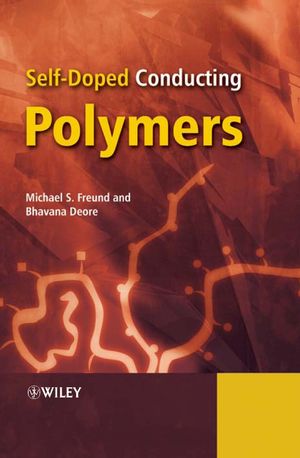Self-Doped Conducting PolymersISBN: 978-0-470-02969-5
Hardcover
338 pages
April 2007
 |
||||||
1.1 Conducting Polymers.
1.2 What Are Self-doped Conducting Polymers?
1.3 Types of Self-doped Polymers.
1.4 Doping Mechanism in Self-doped Polymers.
1.5 Effect of Substituents on Properties of Polymer.
1.6 Applications of Self-doped Polymers.
References.
2. Self-doped Derivatives of Polyaniline.
2.0 Introduction.
2.1 Chemical Synthesis of Sulfonic Acid Derivatives.
2.2 Electrochemical Synthesis of Sulfonic Acid Derivatives.
2.3 Enzymatic Synthesis of Sulfonic Acid Derivatives.
2.4 Properties of Sulfonic Acid Derivatives.
2.5 Synthesis and Characterization of Carboxyl Acid Derivatives.
2.6 Synthesis and Characterization of Phosphonic Acid Derivatives.
2.7 Self-doped Polyaniline Nanostructures.
References.
3. Boronic acid Substituted Self-doped Polyaniline.
3.1 Introduction.
3.2 Synthesis.
3.3 Properties of Self-doped PABA.
3.4 Self-Cross-Linked Self-doped Polyaniline.
3.5 Applications.
References.
4. Self-doped Polythiophenes.
4.1 Sulfonic Acid Derivatives.
4.2 Carboxylate Derivatives.
4.3 Phosphanate Derivatives.
References.
5. Miscellaneous Self-doped Polymers.
5.1 Self-doped Sulfonated Polypyrrole.
5.2 Carboxyl Acid Derivative.
5.3 Self-doped Poly(3,6-carbaz-9-yl)propanesulfonate.
5.4 Self-doped Poly(p-phenylenes).
5.5Self-doped Polyphenylenevinylene.
5.6 Self-doped Poly(indole-5-carboxylic acid).
5.7 Self-doped Ionically Conducting Polymers.
References.



